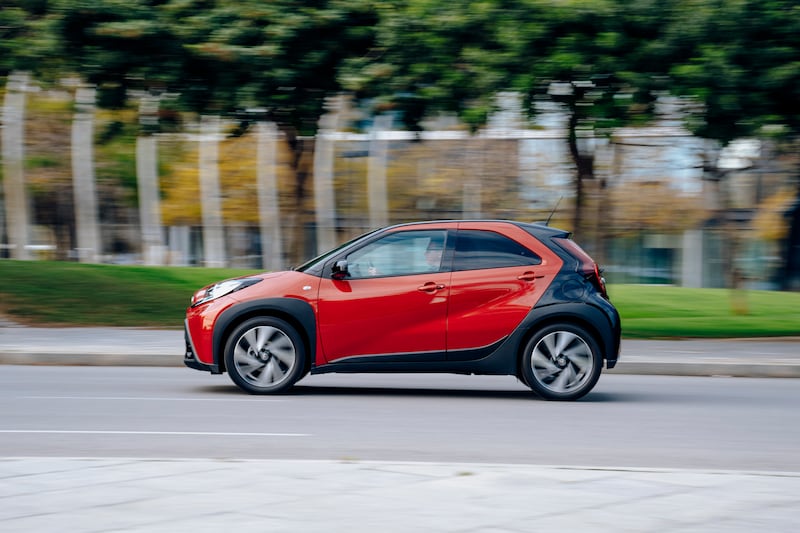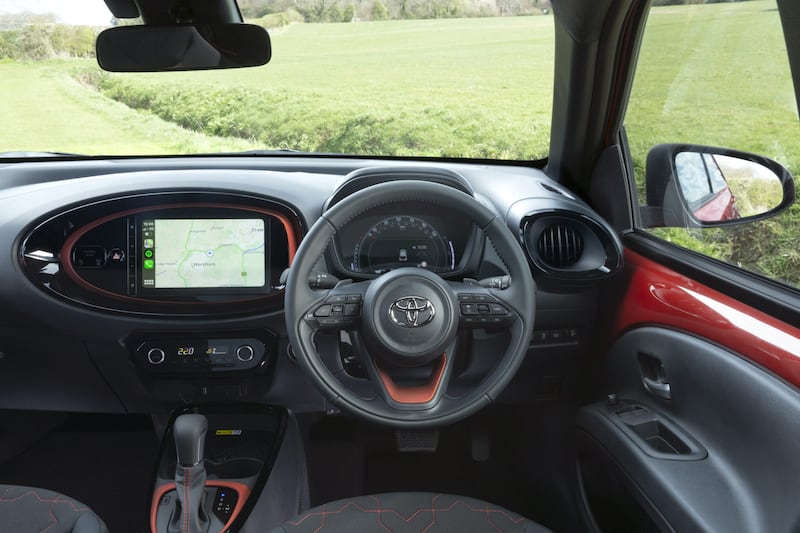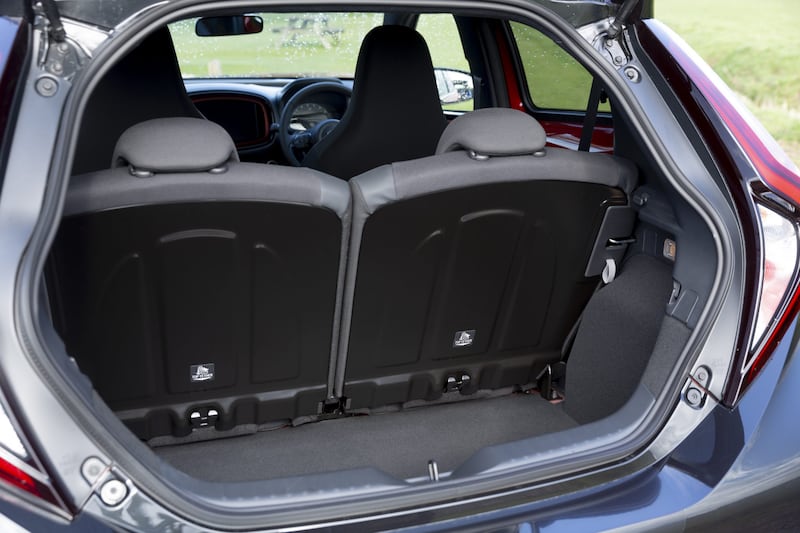In time this car may come to represent the peak of the SUV crossover craze. Here we have a fully fledged city car, designed for urban life, yet dressed with off-road design cues.
It’s also a car that highlights the problem any government or council would have if they were to roll out an arbitrary ban on crossovers and SUVs. Many have called for such a ban based on environmental reasons or safety concerns for other road users. Yet the models singled out for most social media attacks are often from premium brands and driven in well-heeled suburbs. Perhaps envy is as an underlying force.
Is the campaign driven by a desire to remove SUVs from our streets, or take a few wealthy people down a peg or two? If that’s the real motivation, then do we really think the folks who can afford these cars are suddenly going to drive around in 2001 Ford Fiestas?
Regardless of the motivation, there are serious issues with the practicalities of any bans. What exactly is an SUV? Is this Aygo X an SUV in anyone’s eyes? Some suggest that the Government could apply the infamous US court view on pornography that “I know it when I see it”, but who is going to be the arbiter on this?
READ MORE
If there is a single styling trait that seems to signify mock-SUV in the auto market, it is plastic wheel-arch cladding
For an industry driven by engineers and accountants (plus a bootful of lawyers), this approach is unlikely to pass muster.
More likely, there would be a need to base any bans on a vehicle’s emissions, weight, height or length. In all these instances, some “regular” cars are likely to fall foul while models like the Aygo X will clearly slip through net.
Not that the Aygo X should qualify as an SUV under any criterion.
If there is a single styling trait that seems to signify mock-SUV in the auto market, it is plastic wheel-arch cladding. If you were looking for something to ban, then that’s a great place to start.
In terms of emissions, the Aygo puts out just 109g/km of CO2. Meanwhile, it weighs in at just 940kg; compare that to 1,468kg for the all-electric Renault Zoe, for example.
As for its height, the Aygo X is taller than the current Yaris, with which it shares most of its underpinnings. And at 3.7 metres, it’s a little longer than many rival city cars. But it hardly qualifies as a monster SUV.

For all its SUV pretensions, when it comes to living with this car, the real pinch-point is in the rear, where legroom is cramped, similar to the back seats of a sports car. You get your first warning when you reach for the rear door handle, which is nearly part of the rear light cluster.
Clearly there were trade-offs in the Aygo X plan, so improving bootspace took priority, which is larger than the previous Aygo. Even then, at 231 litres, it’s not as big as rivals, like the Kia Picanto.


While rear seat passengers don’t get much joy in the Aygo X, the real improvement is up front, where the car feels a lot more spacious, akin to a proper family hatchback. A completely revamped dash also delivers far more spurts of colour than the usual sea of hard black plastics that’s a trademark of small Asian cars.
Power comes from a little one-litre three-cylinder petrol engine, pumping out 72hp and 93Nm of torque. It’s the sort of peppy, eager performance that makes city cars so much fun to drive at low speeds, but it’s not quite up to par with rivals.
It’s certainly not quick and needs you to keep the revs high to deliver its torque. That said, if you need a commuter car that can occasionally double as a long-distance drive, then the Aygo X can deliver.
Toyota is proving there is still a future market for city cars, despite the ever-increasing costs incurred ensuring they meet the latest emissions and NCAP safety standards
The beauty of this Aygo X is its agility around tight urban streets and city car parks.
What’s more, Toyota is proving there is still a future market for city cars, despite the ever-increasing costs incurred ensuring they meet the latest emissions and NCAP safety standards.
Aygo X comes with Toyota’s Safety Sense 2 package. This includes features such as a pre-collision system that can detect other vehicles, cyclists and pedestrians. At first it issues an audible warning if it suspects a collision is imminent, and then boosts the brake force if the driver responds.
It also features autonomous emergency braking when a collision is unavoidable and the driver fails to act. This system can decelerate the car by up to 40km/h in the event of a collision with a cyclist or pedestrian.
Also included are features such as automatic high beam lights and road sign assistance. Throw in the adaptive cruise control that is linked to lane keeping assistance and you have the sort of tech toolkit previously reserved for premium car owners, yet this time on a car less than half their size – or price.
Prices start at €18,035 for a version that still boasts adaptive cruise control, rear reversing camera and lane-keeping assist, along with a 7-inch touchscreen that works with Apple CarPlay and Android Auto. Move up to the Envy grade and you get climate control, a 9-inch touchscreen, wireless charging, along with 18-inch alloys for €20,540.
Our test car was the range-topping Limited version, priced at €22,580.
For all the Aygo X’s impressive standard features, those prices pitch it higher than its city car rivals. The Dacia Sandero starts at €15,540, the new Hyundai i10 begins at €16,995, while a similar mock-crossover SUV styling can be had on a Suzuki Ignis from €16,320.
Clearly, Toyota is pitching its new city car at the upper end of the market, and in return delivering more to buyers.
At a time when other mainstream brands are abandoning this market, it’s great to see Toyota staying in the game. There are many buyers who just need a small car, but want the same levels of safety and entertainment tech as the rest.
The biggest hurdle the Aygo X struggles with is price. Even with the extra features – and those SUV styling touches – it’s hard to justify the extra spend over competitor city cars. And while Toyota’s strong position on the Irish market may counteract this problem somewhat, when you consider the higher-grade models cross the €20,000 Rubicon, then the Aygo X starts to run up against its award-winning sibling, the Yaris.
Lowdown: Aygo X
Power: 1-litre three-cylinder petrol engine mated to a five-speed manual transmission, putting out 72hp and 93Nm of torque
0-100km/h: 14.9 seconds
Price: €22,580 as tested (from €18,035)
Our rating: 3/5
Verdict: Well-dressed and well-equipped but price is its biggest problem











